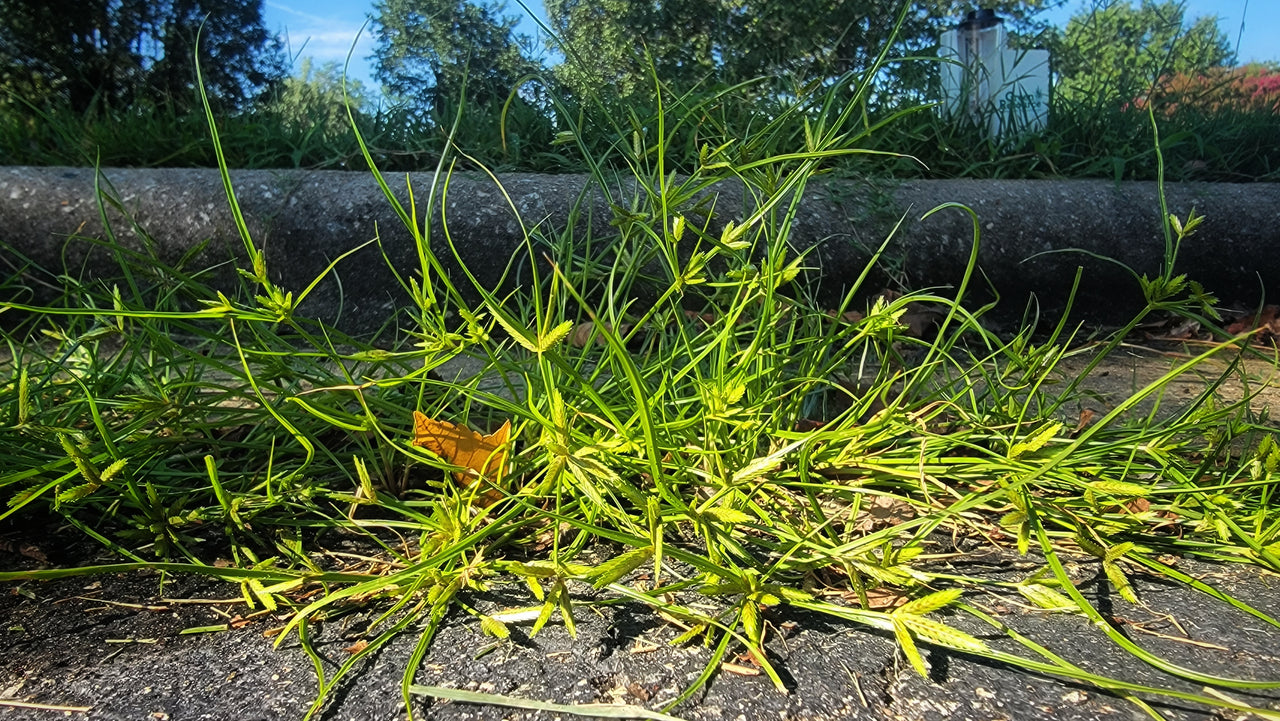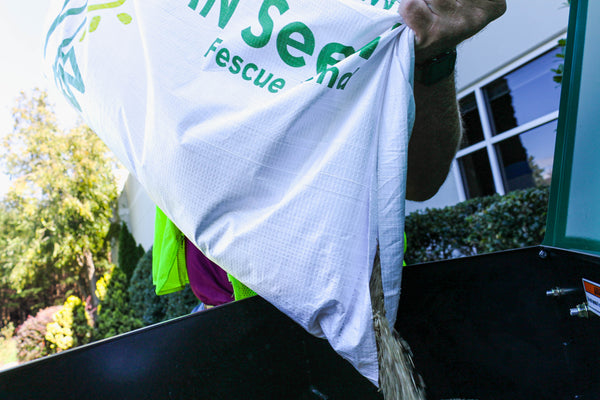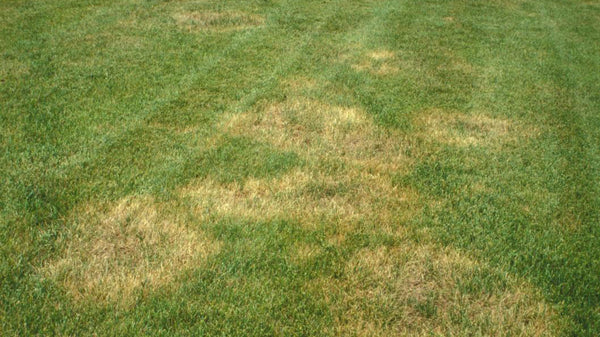Nutsedge can be one of the toughest weeds to control with its large bulbous root system. In the diagram of a Nutsedge below it shows that different parts of the nutsedge that help to identify it.
The easiest way besides the bright yellow color and fast-growing pattern, is to rub the stem of the nutsedge between your fingers. If you feel a triangler stem, then you know for sure it is a nutsedge.

Photo Credits: Department of Plant Science – Pennsylvania State University
There are two main types of nutsedge that commonly grow in lawns across the transitional and southern zones of the United States, Yellow Nutsedge and Purple Nutsedge.
The biggest difference between a yellow and a purple nutsedge is the yellow is usually lighter green compared to the purple. The purple also does not grow nearly as tall as the yellow, ranging around 1 1/3 feet tall compared to the yellow at 3 foot tall.
Growth Patterns, Cultural Conditions, and Where You Will See Them
Nutsedges will only grow during the warmer months typically in late spring through the first frost of the fall. They are commonly found in moist areas and compete with slower growing cool-season grasses that are stressed during the summer months.
While they only grow during the summer months, Nutsedge are perennially that will come back from tubers (or nuts) in the ground each growing season. This is why it is common to see them in the same area year after year.
Where do they come from? Nutsedge commonly come from seed, but can also spread though rhizomes under the ground. What makes them even more difficult to control is that they can sprout from 14 inches beneath the soil.
What Controls Nutsedge?
The key to controlling nutsedge is using a product that will reach and kill all the way down to the tuber. This means you will need to use products that translocate in the plant.
Nutsedge can be controlled using two different methods, pre-emergent or post-emergent.
Pre-emergents need to be applied before it starts growing for the season. They can be applied either in a granular form or in a liquid form.
If you missed the window for pre-emergent control, a Post-emergent is the best option.
Post-emergent Control of Nutsedge
Safe on Cool-Season & Warm-Season Grass:
Sedgehammer
Dismiss NXT
Solitare
Vexis
Celero
Warm-Season Grass Only:
Celsius XTRA
Katana
Image
Sources:
http://ipm.ucanr.edu/PMG/WEEDS/ID/sedroots.html
https://eorganic.org/node/5131




